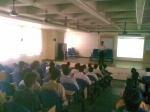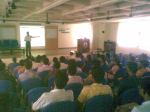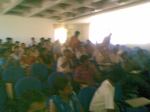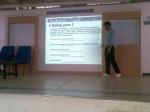I was just searching for how to enable the mounting the drives at start up because I didn’t find authorization menu in Fedora 12.
I found one solution and it is working for my system
open terminal and do following commands:
[codegambler@localhost /]$ su
[root@localhost /]#vi /etc/selinux/config' # This file controls the state of SELinux on the system. # SELINUX= can take one of these three values: # enforcing - SELinux security policy is enforced. # permissive - SELinux prints warnings instead of enforcing. # disabled - No SELinux policy is loaded. SELINUX=permissive # SELINUXTYPE= can take one of these two values: # targeted - Targeted processes are protected, # mls - Multi Level Security protection. SELINUXTYPE=targeted change the hi-lighted line as given; [root@localhost /]# vi /etc/rc.local #!/bin/sh # # This script will be executed *after* all the other init scripts. # You can put your own initialization stuff in here if you don't # want to do the full Sys V style init stuff. touch /var/lock/subsys/local now add following lines: su -c 'mount -t ntfs-3g /dev/sda2 /media/windows -O uid=500,rw,fmask=0000,dmask=0000' su -c 'mount -t ntfs-3g /dev/sda3 /media/srudy_fun -O uid=500,rw,fmask=0000,dmask=0000' it is for my system Now whenever you will restart your system you no need to mount again: Happy fedora :)
















